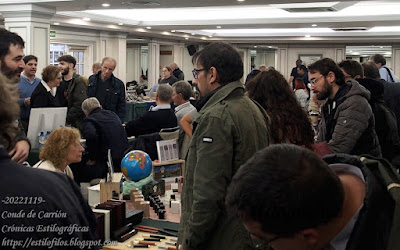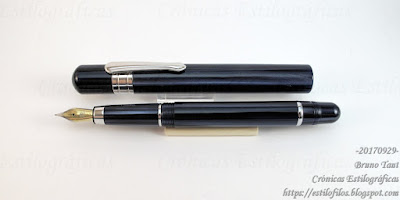Pilot has recently released a new line of inks called Tsuwairo (see Fig. 1). Interesting as these inks might be, they also come with a list of inconveniences the old inks in similar colors did not have.
How do these two lines of inks compare?
That is the question I want to answer on this text.
Introduction.
Among the big three Japanese pen companies, Pilot was the last one to release a pigmented ink. The reason for that was that Pilot already had a permanent ink—the Pilot Blue-black ink. But in 2022, Pilot finally marketed three pigmented inks under the series name of Tsuwairo (強色; literally, “strong color”).
Pilot declares these inks are lightfast and water resistant. But Pilot also warns about their risks (see Fig. 2):
– Not to be used in urushi-decorated pens.
– Not to be used in three Pilot pen models Custom Heritage 92, Custom 823, and Justus 95.
– Not to be used with the old converter CON-70 but only with the newer version CON-70N and with the CON-40.
– Not to be used with non-Pilot pens.
 Figure 2. The instructions and warning of Pilot about the use of Tsuwairo inks. It also describes the differences between the old CON-70 and the newer CON-70N.
Figure 2. The instructions and warning of Pilot about the use of Tsuwairo inks. It also describes the differences between the old CON-70 and the newer CON-70N.
And their price is 2.5 times higher than those of the regular inks by Pilot—JPY 1000 vs JPY 400, taxes aside; 30 ml.
But if the Pilot Blue-black is also permanent, albeit by different means and possibly not lightfast, are the new Tsuwairo inks worth the extra cost and the extra risks? How permanent are those older inks?
Methodology.
To answer those questions I performed some simple experiments. In essence, three inks were tested against water immersion.
The inks were Pilot Blue, Pilot Tsuwairo Blue, and Pilot Blue-black. The paper was Pilot sample paper, manufactured by Life. (See Fig. 3).
The writing was done with Sailor fude nibs and with Pilot M and calligraphy (CM, stub) nibs made of steel.
The immersion in water was made at two different times: about 5 min after being written and after several hours after that.
Results.
On figure 4 we can see the written sample made with Pilot nibs before (top) and after (bottom) immersion in water. On the left, the sample was exposed to water 6 minutes after being written. That on the right, after 4 hours.
 Figure 4. Written samples. Pilot nibs (M and CM). Sample on the left immersed in water 6 minutes after written. Right sample, immersed 4 hours after being written.
Figure 4. Written samples. Pilot nibs (M and CM). Sample on the left immersed in water 6 minutes after written. Right sample, immersed 4 hours after being written.
And on figure 5, the results of a similar experiment but with Sailor fude nibs. The sample on the left was immersed after 5 minutes of written. The one on the right, 12 hours later.
 Figure 5. Written samples. Sailor fude nib. Sample on the left immersed in water 5 minutes after written. The one on the right, immersed 12 hours after being written.
Figure 5. Written samples. Sailor fude nib. Sample on the left immersed in water 5 minutes after written. The one on the right, immersed 12 hours after being written.
Pilot nibs, on figure 4, carry a lot less ink that those by Sailor (Fig 5).
The results are quite clear and do not change significantly with the variables explored on these experiments—time of the ink on the paper, and amount of ink in the nib and on the paper.
The Tsuwairo ink clearly performs better than the regular inks, and there are not major differences between the behaviors of the regular Blue and Blue-black inks re their resistance to water.
However, the traditional inks are perfectly legible after 15 minutes in water, and they do this at a much lower cost, and without the risks associated to the pigmented inks, as warned by Pilot.
Conclusions.
The Tsuwairo Blue ink is indeed water resistant, but according to the manufacturer it should not be use under certain conditions.
On the other hand, the traditional Blue and Blue-black inks show a remarkable resistance to water without any of those risks and at much lower cost.
Moonman A1 — Montblanc Burgundy Red
Bruno Taut
February 13th, 2023
etiquetas: Pilot, tinta
Bruno Taut
February 13th, 2023
etiquetas: Pilot, tinta














































